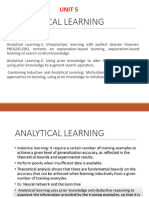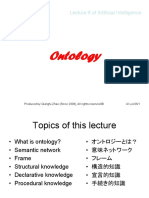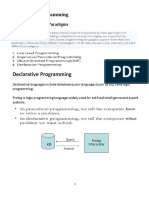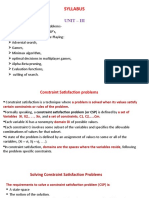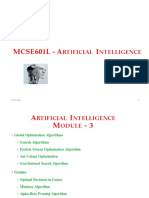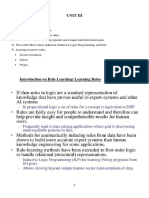0% found this document useful (0 votes)
228 views68 pagesAI-Lecture 6 (Adversarial Search)
This document summarizes a lecture on adversarial search and game playing in artificial intelligence. It discusses why games are studied in AI, including that they present hard problems and model competitive multi-agent environments. Common games examined include chess, checkers, and Go. The document outlines adversarial search, where there is an opponent that cannot be directly controlled. It introduces the minimax algorithm and how it finds optimal strategies by recursively evaluating game trees. Alpha-beta pruning is presented as a way to improve minimax search by pruning branches that cannot affect the outcome.
Uploaded by
Braga Gladys MaeCopyright
© © All Rights Reserved
We take content rights seriously. If you suspect this is your content, claim it here.
Available Formats
Download as PDF, TXT or read online on Scribd
0% found this document useful (0 votes)
228 views68 pagesAI-Lecture 6 (Adversarial Search)
This document summarizes a lecture on adversarial search and game playing in artificial intelligence. It discusses why games are studied in AI, including that they present hard problems and model competitive multi-agent environments. Common games examined include chess, checkers, and Go. The document outlines adversarial search, where there is an opponent that cannot be directly controlled. It introduces the minimax algorithm and how it finds optimal strategies by recursively evaluating game trees. Alpha-beta pruning is presented as a way to improve minimax search by pruning branches that cannot affect the outcome.
Uploaded by
Braga Gladys MaeCopyright
© © All Rights Reserved
We take content rights seriously. If you suspect this is your content, claim it here.
Available Formats
Download as PDF, TXT or read online on Scribd
/ 68








